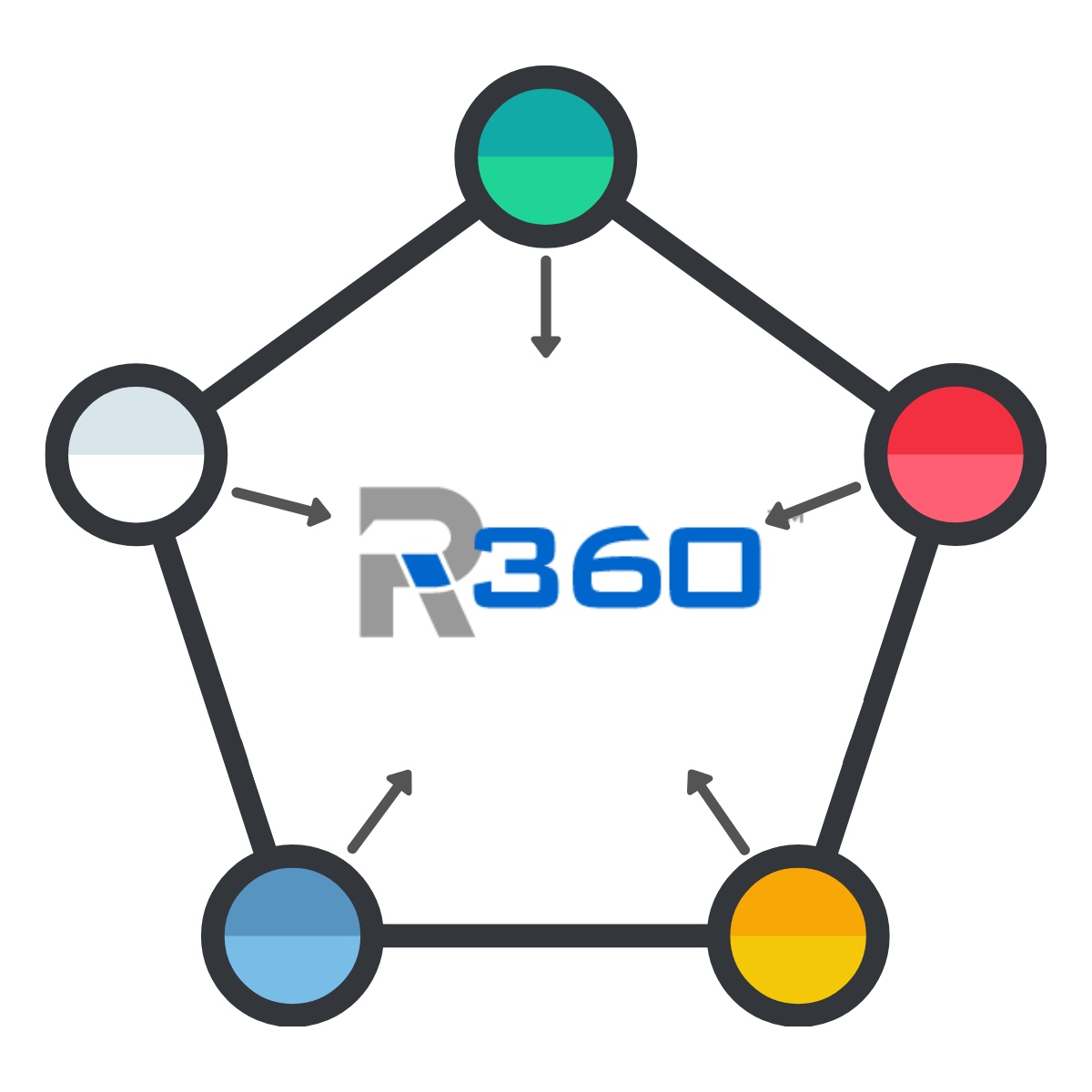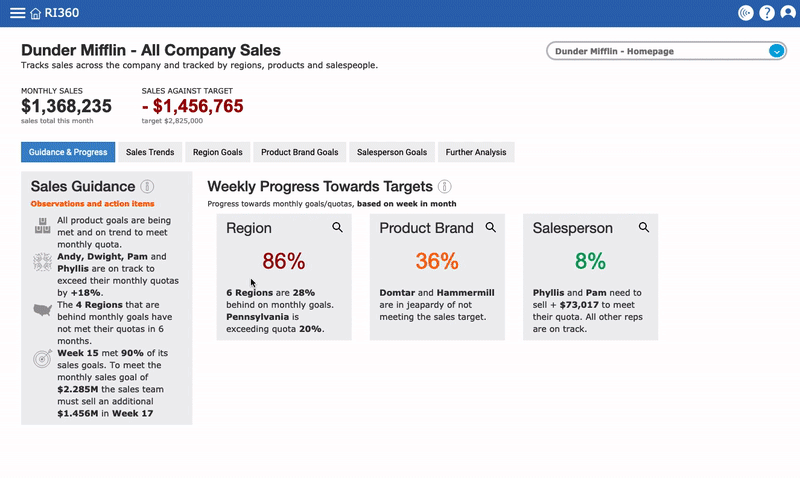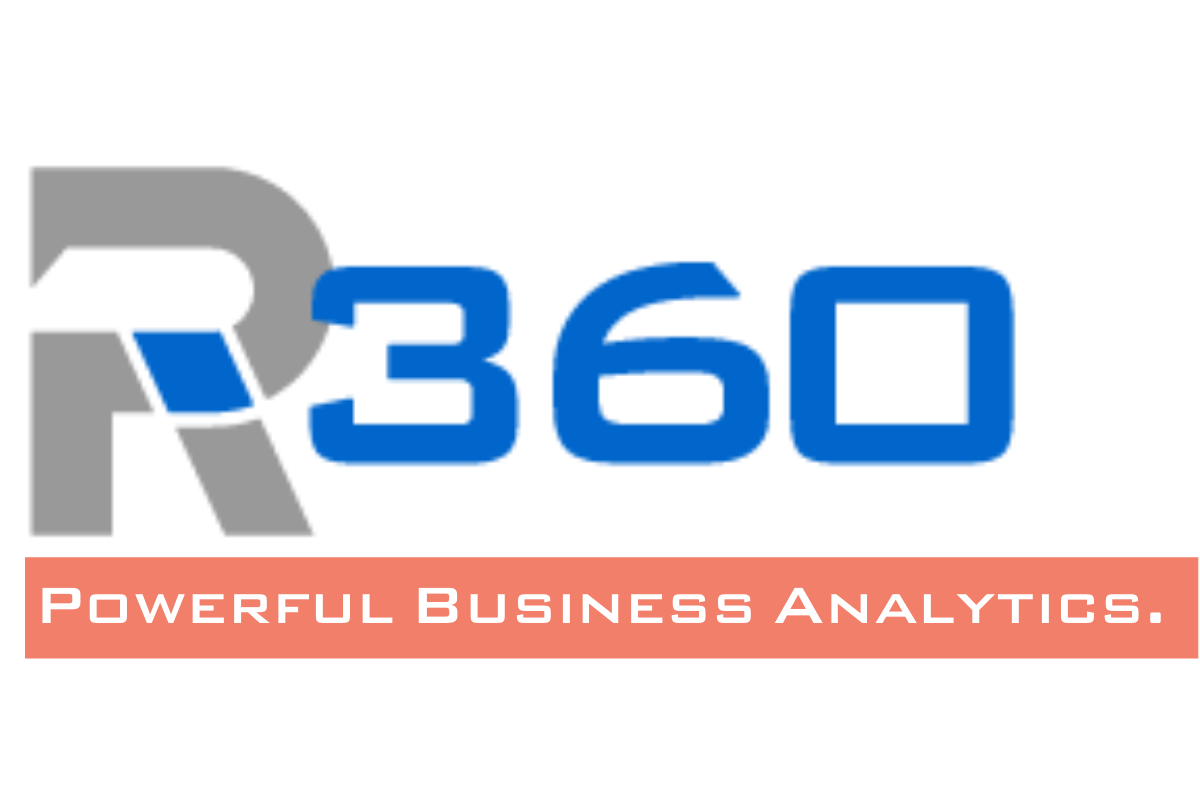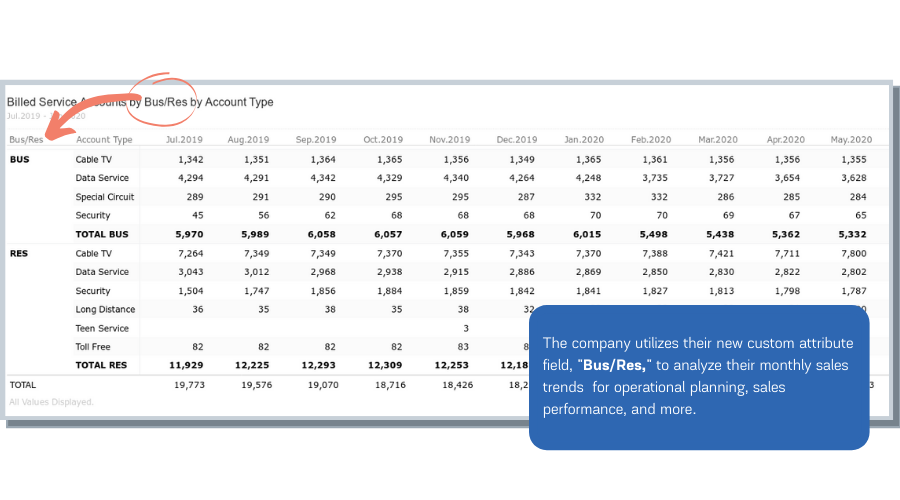We often receive questions from prospects about what they should expect in a business analytics project, more specifically an Ri360 implementation. The following is an interview-style discussion with Chris and Kevin about ReconInsight’s iterative development process when implementing our business analytics platform, Ri360. Let’s de-mystify iterative development, how it is used in business analytics, and how it relates to the customer experience during an Ri360 implementation.
If you are new to ReconInsight, a quick summary:
ReconInsight’s software and services are built around providing an end-to-end business analytics solution. ReconInsight data masters manage the installation and implementation of all Ri360 environments so our customers can focus on analysis and leave the technical work to us.
Table of Contents:
What are the advantages of iterative/agile development opposed to traditional project management?
What are high-level goals of an agile business analytics project?
What is the customer experience when working with ReconInsight on a business analytics project?
Why do I need a data analyst for my project - can’t I do it myself?
How many iterations are there in a business analytics project?
Are iterations always the same? What are examples of different types of iterations?
What are common pitfalls and how can I avoid them in a business analytics project?
What are the advantages of iterative/agile development opposed to traditional project management?
Short answer: speed, confidence, knowledge
Kevin: Traditional project management often expects all planning and design to be completed before any solution development begins. Due to the technical and theoretical complexity of analytics projects, it is seldom possible to understand and define an entire business need before a partial solution is presented to the customer. When we iterate quickly within a project between analysis/design/develop/review the true needs of the final solution evolve into something with greater value to the users and stakeholders.
Chris: Since every business has a unique way of tracking and organizing their data, “business analytics” is an abstract idea until you have all of your business data cleaned and unified in a platform like Ri360. The first step in a ReconInsight iterative business analytics project is building a real-world application that cleans and unifies your business data in Ri360. Our iterative approach ensures that any business, regardless of size, can quickly take advantage of business analytics technology and become a data-driven organization.
What are high-level goals of an agile business analytics project?
Short answer: meet business objective, build the foundations of a data culture
Kevin: Iterative implementation strives to keep all parties engaged and contributing to the eventual production solution all while developing intimate knowledge at a business and technology level. We believe this is especially important for business analytics projects because it builds data literacy and is an important step towards data culture.
Chris: As with any project, the most important goal is to meet the business objective. Clients should also expect their business data unified and organized in Ri360 and presented in data sheets that provide high-level analysis and a set of pre-configured information dashboards.
Who is involved in a business analytics project?
Short answer: business expert, leadership, data analyst
Chris: A business analytics project generally includes three main roles: business expert, leadership, and data analyst. The client’s business expert represents the customer during project engagements. Leadership (ideally) continues to be involved even after they have approved the work and handed project execution off to the business lead. ReconInsight provides the technical resources - data analysts. Our data team (Kevin, Ken, Kim, Chris) manages the technical implementation and configuration based on your specifications. For more information, we have a great post that goes in-depth on data team structure.
Kevin: While the number of customer participants varies, the customer must commit those who understand the business issues that are to be the target of the solution. It is also important for leadership to be actively involved so when the need arises for business-level feedback and/or decisions on the direction of a solution, iterations can move forward without a hitch. ReconInsight’s data masters bring technical expertise. We fondly call our data analysts ‘Data Masters’ because we all have extensive industry experience and more than 125+ years of combined solution experience.
What is the customer experience when working with ReconInsight on a business analytics project?
Short answer: Partnership.
Chris: A business analytics project with ReconInsight includes a series of iterations. On average, one project includes 1-3 strategic business goals and, depending on the complexity of these goals, can be completed in 3-5 iterations. We always define timing expectations to ensure ReconInsight’s team is working within your schedule.
The first iteration of any Ri360 project is setting up Ri360’s data pipeline: extracting all business data from disparate systems, loading into Ri360, cleaning and translating the data for storage and, ultimately, visualization and human analysis. We’ve found that the ‘light bulb’ moment occurs the first time you get some hands-on time exploring your data in Ri360. It enables you to apply the abstract business analytics knowledge you have acquired to your unique use case. From then on we work closely together to implement your technical requests for specific reports and dashboards that align with your KPIs. It is a very fluid, creative partnership between ReconInsight data masters and our clients.
Kevin: Ri360 solutions are the product of business folks and ReconInsight data masters working together towards a common goal. In each iteration, the ReconInsight data analyst sends samples of solutions to business stakeholders for reviews and adjustments. We will often use iterative solution samples to work on understanding the actual business issues with the stakeholders. Each iteration is focused on demonstrating a portion of or a complete solution for the project at hand. In some cases an iteration may be used to discover what is definitely not needed. Our data team has been involved in hundreds of solutions and come armed with an arsenal of best practices as well as the background to pioneer new solution techniques.
Why do I need a data analyst for my project - can't I do it myself?
Short answer: Technically you could (maybe?), but we wouldn’t recommend it.
Kevin: A skilled analyst bridges the worlds of business use and solution technology. Analysts know what questions to ask of the business and have the knowledge to build an impactful solution quickly. We are adept at becoming “relative” experts in understanding the business’s use case and goals. I often equate this to being a professional “spy” on business processes. Having the business and technology skills in an analyst versus attempting a home-built solution can be the difference between exciting, engaging analytics and frustration.
Chris: Unless you plan on hiring a dedicated analyst to your staff, you will most likely sacrifice ease and efficiency if you try to implement a business analytics solution without a data analyst. The ReconInsight approach to business analytics is not solely technology-based, we believe that successful business analytics require equal parts technology and people. Our data masters bring invaluable experience and deep-rooted technical skills that lead to more robust and valuable solutions.
How many iterations are there in a business analytics project?
Short answer: It depends on the client and complexity, but at least 2-3 iterations minimum.
Chris: Ri360 implementation project size is dependent on a client’s number of integrated business systems and their data maturity. Each integrated system requires, on average, 3 iterations, to set-up.
Kevin: We will typically have at least 2 to 3 iterations when implementing an Ri360 solution. There really is no set number and can vary wildly, however the more iterations the better focused a solution becomes.
Are iterations always the same? What are some examples of different types of iterations?
Short answer: All iterations include four stages: analysis, design, develop, and review
Chris: All iterations are not the same but they do follow the pattern of analysis, design, develop, and review. The first iteration focuses on setting up the data pipeline’s integrations with external systems and initial data model design. Subsequent iterations focus on fine-tuning the business logic expected by the client and information presentation.
Kevin: Iterative development allows for ultimate flexibility - no request is too small or too large - and, as such, the length and number of iterations can vary greatly from project to project. Whether we are installing a new Ri360 environment or creating new data models in an existing Ri360 environment, we take the same iterative/agile approach to our work.
Recently, I worked on a smaller project that only required one iteration and was completed in a day. A customer requested a new information dashboard that tracked what information was added, changed, and deleted from their integrated business systems. They were happy with the solution we created and had no change requests upon completion.
Alternatively, we completed a more complex project that took numerous iterations and feedback cycles with the customer because of the size of their request. The customer engaged their ReconInsight data analyst to assist with the development of a series of reports and dashboards that tracked sales data against a set of promotional codes. Following the initial knowledge built by our analyst, the customer was able to begin defining what data points they cared about and how they wanted to quantify the promotion effectiveness. Many iterations of analysis/design/develop/review took place before a final solution was reached. Throughout the iterative process the customer had the freedom to evolve their needs as the solution was being engineered.
How long is an iteration?
Short answer: ReconInsight is laser focused on providing results in a timely manner. Iteration length is based on feedback loop and customer’s timing. We work within the customer’s schedule.
Chris: We pride ourselves on working quickly and having fast turn-around. We are data geeks at heart and we love designing and developing new analytics solutions. The first iteration typically takes the longest because we are setting up Ri360’s data pipeline interfaces, establishing an initial data model, and having initial exploratory meetings with the client. We strive to complete Ri360’s set-up quickly because we want to show the client their data as soon as possible. This first iteration can take 3 to 5 days. Subsequent iterations take 1 to 2 days.
Kevin: An iteration could last from 1 day to a week. I like to keep the time short between discussing a solution and presenting some portion of the solution. This helps everyone involved stay focused and keeps ideas flowing.
What are common pitfalls and how can I avoid them in a business analytics project?
Short answer: We use iterative development because we believe it helps us avoid almost all pitfalls a business analytics project could encounter.
Chris: In our experience some of the biggest unexpected problems customers encounter are: unclean data, education/awareness of best practices, lack of technical skills/ resources, weak integrations, and under-estimating the time commitment needed for long-term success with business analytics. Phew. At ReconInsight, our technology and services are designed to (as best we can) ensure our customers avoid all of these struggles. Many of them can be avoided by using iterative development. Customers are able to contextualize their business data in an analytics solution in just a few days after starting installation.
Kevin: A common concern is wasting valuable customer or data analyst time through miscommunication, overthinking/delaying development, or fear of failure. With iterative development, ReconInsight analysts view every iteration as a stepping stone towards a final solution: any new knowledge is knowledge gained (even if it ends up being thrown away). Knowing something that is not needed is just as valuable as knowing something that is needed. If the customer or analyst sees something incorrect or notices the project going in the wrong direction, we can quickly course correct.
Do the iterations ever end?
Short answer: Projects always have an end, but business analytics should be an always evolving part of your organization.
Chris: Ha - yes, excellent question. We don’t want to give the impression that an iterative approach goes on indefinitely. In most cases, our projects fall within 3-6 iterations total. At the start of each project we always establish timing expectations with the customer. There is always an end to a specific project.
Kevin: As Chris said, the number of iterations may vary, but projects are always completed. Iterative development, however, is a cyclical methodology that promotes constant improvement. It is the nature of business analytics, that once one project is complete it often spawns an understanding of new requirements and derivative solutions that start the iterative process once again. With Ri360 solutions nothing should ever be considered cast in stone as new understandings and business needs open opportunities for enhancements and advanced analytics capabilities.










